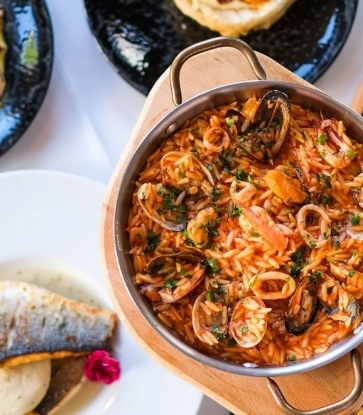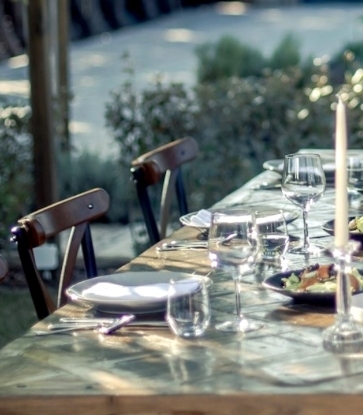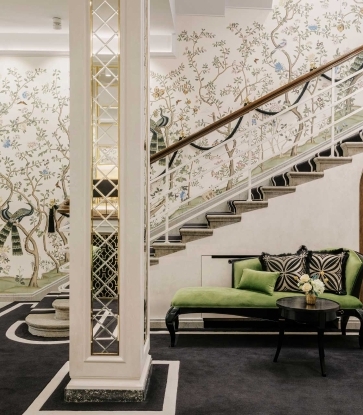Whether you’re travelling close to home or further afield, recommendations from locals often lead to surprising and rewarding discoveries. With this in mind, we’ve asked some of the region’s local experts for their favourite touring itineraries and places to visit between Brescia and Lake Iseo in order to make your trip to the Franciacorta region even more enjoyable.
Our list of routes exploring the region’s art, natural landscapes, and food and ine starts with suggestions from Silvano Brescianini, President of the Franciacorta Consortium, who chooses the evocative Torbiere del Sebino (peat bogs) as “an ideal place for a walk, while a visit to the old Maglio di Ome forge is also interesting as it represents an important piece of iron-working history in our valleys. Also worth exploring is the secluded route from Ome to Monticelli, as well as the road from Timoline to Provaglio. Finally, I would suggest that visitors to our region sample the three very different types of cuisine served here, which include recipes inspired by lake fish, produce from Rovato market and typical spit-roasted dishes from Gussago”.
A visit to the Stella di Gussago sanctuary, “a peaceful and restful place”, is one of the first recommendations offered by Riccardo Scalvinoni, the chef at Il Colmetto restaurant which has been awarded a Michelin Green star: “Franciacorta has a longstanding arts and crafts tradition, and my advice is to stop and talk to people who work here. As for specific touring itineraries, the roads that wend their way through the Monterotondo and Borgonato vineyards are among the most beautiful in the region, while interesting places to visit include the Olivetana di San Nicola abbey in Rodengo Saiano and the botanical gardens in Ome, where you can enjoy a pleasant stroll among the conifer trees”.
Andrea Pagliari, a Natural Sciences graduate and owner of the Millemonti outdoor pursuits company, highlights the Sebino peat bogs, which he says are a paradise for photographers: “As soon as you get here, you’re immediately surrounded by thickets of cane, pools of water and the sound of different types of birdsong. Anyone interested in art or history will be fascinated by the old Averoldi mill and forge, which play a part in keeping the region’s traditional crafts alive.” Pagliari goes on to talk about the roads in Franciacorta, which he says are “also perfect for mountain biking”, and on the quality of the food that can be bought at the Lanzani Bottega delicatessen and wine boutique. He continues: “In terms of touring options, an increasing number of travellers are looking for natural landscapes and one of the region’s most delightful routes leads to Iseo via Campiani and then over the hills that separate Gussago from Rodengo Saiano. After crossing Monte Delma and heading to Fantecolo you can climb up to the Madonna del Corno overlooking Provaglio d’Iseo”.
According to Pagliari, the region’s natural landmarks are of particular geo-historical interest: “From Monte Alto and the Madonna del Corno, concentric arches can be seen on the hills that mark the limit reached by different ice ages. The Mindel glacial stage (480 000-350 000 years ago) has left a moraine deposit on which the villages of Erbusco, Cazzago San Martino and Paderno Franciacorta stand today; the frontal moraine of the Riss ice age (240 000-150 000 years ago) includes the villages of Corte Franca and Provaglio d’Iseo, while the Wurm ice age (120 000-11 000 years ago) resulted in the moraine between Clusane, Cremignane and Timoline”.
Geological history and a unique microclimate are distinctive features of this geographical region and according to Camilla Alberti, President of the Franciacorta Wine Route, these natural features can be admired at the Gaina waterfalls in Monticelli Brusati and from the fitness trail on the Monte della Madonna: “Here, after walking through woodlands of oak and sweet chestnuts you reach the 14C Santuario della Madonna della Rosa, which stands at the most panoramic point on the Monte della Madonna hill. In terms of touring itineraries, I would suggest the old Valeriana road which follows the meanders of the Gandovere stream into the Ome region, before heading towards Maglio Averoldi, a historic hamlet with historic mills that have been in operation since the 12C. The route continues into the Parco delle Querce di Ome as far as Fratta and Fontana, which is home to the 15C Church of San Zenone”. Alberti concludes by saying “we have invested heavily in marketing and signage for the Wine Route – we’ve mapped out six cycling itineraries and the same number of hiking routes, all of which can be downloaded from the franciacorta.wine website. As part of the Bergamo Brescia 2023 Capital of Culture project, we are also creating a programme that will showcase the artistic and cultural heritage of the region in association with the ‘Terra della Franciacorta’ organisation”.

Matteo Garosio, owner of the Relais Franciacorta, also recommends exploring the Sebino peat bog, as well as a visit to the Vino Ricci Curbastro museum and a cycle ride along the route from Brescia to Paratico: “Following the old Roman road, you’ll enjoy scenic views as well as discover an area steeped in Roman, medieval and Renaissance history”.
Last but no less central to the continued development of this area on the shores of Lake Iseo are the region’s long-established nautical traditions. An expert on the subject, Martina Bellini, owner of Nautica Bellini, recommends a visit to the Riva Vintage Collection: “This beautiful and elegant testimony to traditional crafts is the brainchild of the brilliant engineer Carlo Riva”, she explains. “I consider the Riva Vintage Collection to be a must for anyone interested in the restoration of historic boats. Also worth visiting is the Archetti workshop on Monte Isola, renowned for its production of wooden vessels which play such an important role in the lake’s history. Finally, I should mention that Monte Isola is also famous for gastronomic products such as salami, extra-virgin olive oil and dried sardines”.













